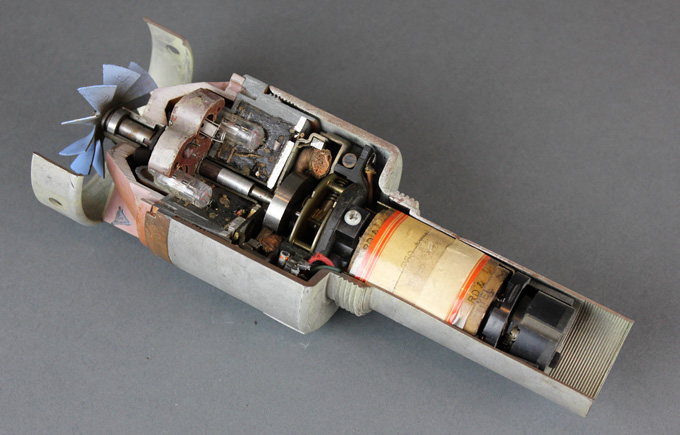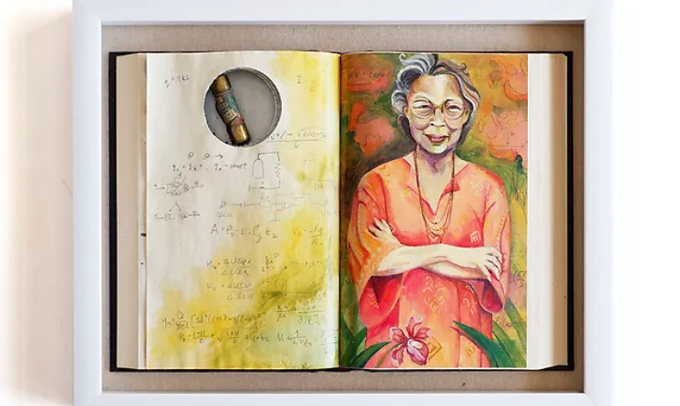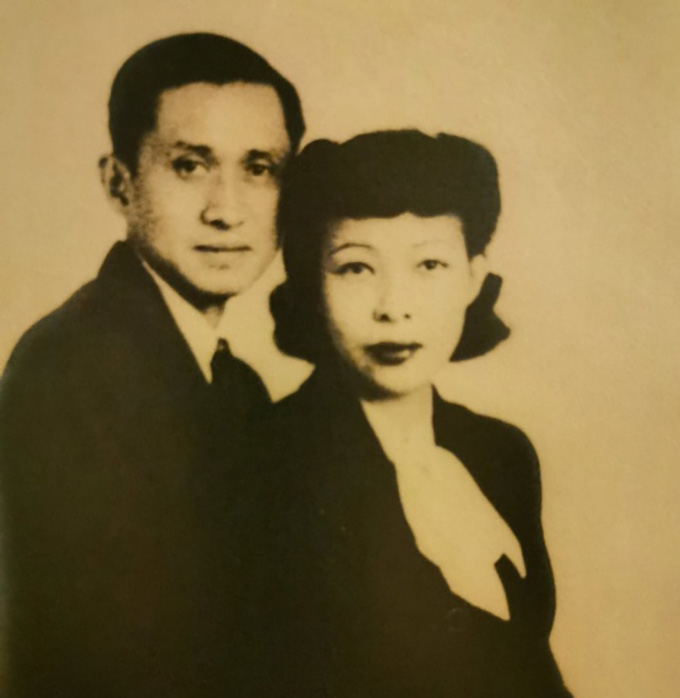This post was originally published on this site
As an amateur historian studying Philippine-American history in Washington, D.C., I’ve long been familiar with the story of Arturo Rotor and Emma Unson Rotor.
The couple moved from the Philippines to Baltimore in 1941 for graduate studies, but World War II disrupted their plans. Shortly after the attack on Pearl Harbor, the Japanese invaded the Philippines, occupying it for three years. The Philippine Commonwealth Government (the Philippines had not yet gained independence from the United States) escaped to Washington in May 1942; Arturo joined the government in exile soon after.
Arturo, who became secretary to the Philippine president and secretary to the Commonwealth cabinet, was something of a Renaissance man. He was an accomplished medical doctor and professor, a prize-winning writer, a classically trained pianist and an orchid enthusiast. Both Rotor syndrome and an orchid variety (Vanda merrillii var. rotorii) are named for him. He was a man “surrounded by myth,” cultural historians Edilberto Alegre and Doreen Fernandez wrote in 1984.
In contrast, his wife Emma was seen as a supportive, background presence. “Emma Unson Rotor sat quietly by [then] made an occasional comment, illustrating the supportive, companionable intelligence with which she had seen master short story craftsman Dr. Arturo Rotor through his long and shining career,” Fernandez wrote in an article describing an oral history project focused on Filipino writers. In the postwar period, Arturo and Emma lived back in the Philippines. Arturo remained a public figure, active in medical and literary circles, while Emma taught math at Assumption College, a private school in Makati.

But Emma Rotor was not only a devoted wife and math teacher. While living in the United States, she conducted groundbreaking weapons research.
How the fuze changed warfare
In late 2021, I read an article by Ma. Isabel Ongpin published in the Manila Times claiming that Emma Rotor was involved in weapons research during the war. I was astonished. “Mrs. Rotor was a teacher of higher mathematics, a subject I stayed away from, knowing my non-quantitative mind,” Ongpin wrote. “But I had her in geography, and she was great. Mrs. Rotor as a mathematician had worked in the Manhattan Project, the secret project that produced the atomic bomb.” I reached out immediately to Ongpin to ask for any reference material she might have that documented Emma Rotor’s time with the Manhattan Project. She replied that it was simply known by everyone who studied at Assumption College, where Emma taught until the 1980s.
After searching through archival material for several months, I found no evidence that Emma was involved in the Manhattan Project. But Emma was indeed part of another weapons research program, arguably just as consequential. She became a key member of a government division that developed an early version of the proximity fuze, the mechanism that makes a shell or bomb detonate when it gets close to its target rather than on impact.
Before the proximity fuze, bombs were known to be inefficient, detonating prematurely and away from their intended targets. An often mentioned and telling statistic is that it took 20,000 shells to take down one aircraft during the London Blitz. First used in June 1943 to bring down a Japanese aircraft, the proximity fuze, which relied on radar technology, was used in major battles in Europe and Asia. In June 1944, the fuze enabled the British to take down nearly 80 percent of German V-1 “buzz bombs.” The fuze was, according to the War Department, “one of the outstanding scientific developments of World War II” and “second only to the atomic bomb.”
First headed by the British in the 1930s, proximity fuze research was later largely led by the U.S. government. The National Research Defense Committee assigned the task of developing fuzes “for non-rotating (e.g., fin-stabilized) munitions such as bombs, rockets and mortar shells,” to the Ordnance Development Division at the National Bureau of Standards, or NBS, an agency of the U.S. Department of Commerce. The work on rotating projectiles was assigned to the Department of Terrestrial Magnetism at the Carnegie Institution and to the Johns Hopkins Applied Physics Laboratory.

Emma Rotor worked on the fuze
Emma Rotor first came to the United States in October 1941, at the age of 28, a few months after Arturo moved to Baltimore to begin his studies of allergies and medical history at John Hopkins. She had planned to study physics there while on leave from the University of Santo Tomas in Manila, where she was a mathematics instructor. The war interrupted those plans. She was undeterred, however, and worked briefly as stenographer at the Enoch Pratt Free Library in Baltimore.
“Oh I was not discouraged,” she said in 1942 in an interview with the Baltimore Evening Sun. “Did I not see in the papers long columns of advertisements — girls wanted, no experience, good salaries? Well, I can work, can’t I?” Though cut off from their families, “we had to learn not to worry, not to think about the things we could not change,” she said. As Emma talked, the article said, “[h]er face is rich with smiles that soften the features and round out the contours.” She is telling a story that is not happy, it continued, “except in that she makes it so.”
In January 1944, Arturo having already joined the Philippine government in exile, Emma joined the Ordnance Development Division, led by radio engineer pioneer Harry Diamond, at NBS, now known as the National Institute of Standards and Technology. Hired as a physicist in a “war time appointment,” she was tasked with supporting “experimental investigations connected with the development of new ordnance devices,” including the “design, construction and testing of mechanical, electrical and radio devices,” according to her appointment letter, which I tracked down with the help of independent researcher Emma Prince, based in St. Louis.
Keith Martin, a librarian at NIST, who I exchanged email messages with, estimates a total of 155 staff members in the division at the time, including those not involved in proximity fuze research, and about 31 in Emma’s section.
She was promoted in less than a year. And in March 1945, her supervisor, physicist William B. McLean, gave her an “excellent” performance rating. “Regardless of grade, Mrs. Rotor is one of the most valuable individuals in the present project,” McLean wrote.
During her time with NBS, which ended in 1947, Emma wrote several scientific papers or coauthored them with colleagues, including Albert G. Hoyem, a physics professor at the University of Iowa in Iowa City who later became a senior official of the Naval Ordnance Test Station at China Lake in California. Her work on “Air travel required for release of arming cover” and on “Measurement of dynamic propeller unbalance” are cited in the 1946 summary report of the Ordnance Development Division’s work on the proximity fuze, titled “Radio Proximity Fuzes for Fin-Stabilized Missiles.”
“Evaluation of the toss technique” (which she authored with Hoyem) reports the results of tests to map out trajectories of bombs. The paper appears in a collected volume of scientific articles on “Bomb, Rocket, and Torpedo Tossing” published in 1946 that also credits Emma “not only for the contributions mentioned above but also for her diligent supervision of the review and assembly of the final manuscript.” She appears to be the only woman among the authors.
NIST’s museum features a proximity fuze and a fin-stabilized missile that, as Martin wrote via email, “she, and others, had a hand in developing.”

Emma Rotor’s legacy
Arturo died in 1988 and Emma in 1998. Arturo and Emma never had children of their own, but a niece, Delia Unson, and a grandniece, Ria Unson, remember Emma fondly. “Tita Emma was an amazing teacher,” Delia Unson, a retired clinical psychologist, recalls. “She could teach anyone and get them to love or at least like math. I met some of her students and found that they loved her!” Emma thought math was easy, Delia Unson says, “because you didn’t have to remember a lot. As long as one remembered the basic formulas and laws.”
Ria Unson remembers spending many afternoons when she was young at Emma’s house. “She was an accepting, nonjudgmental person,” Ria Unson says. A visual artist, Ria Unson has been keeping alive her memories of Emma through her art.
I asked Ria Unson if she thought Emma would have been comfortable with an article highlighting her role in weapons research. She paused. “I don’t think she looked for the spotlight,” Ria Unson said. “She just did what was asked.”
It is clear, however, that Emma didn’t talk openly with her family about this aspect of her life. A couple of family members did think briefly that she might have been part of the Manhattan Project. “Tita, did you work on the bomb?” Ria Unson recalls her father asking Emma likely at a family gathering decades ago. No, Emma replied, a faint smile. “I worked on the fuze.”
No one understood what she meant then, Delia Unson and Ria Unson said, until I showed them a few months ago her work on the proximity fuze. “That was so like her,” Ria Unson said, thinking of that moment at the family gathering. “She wanted people to know but didn’t want people to know.”
